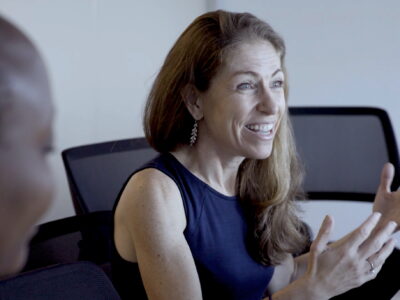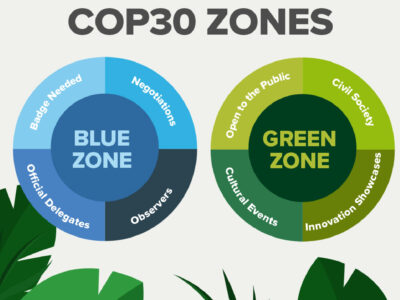Students from the Earth Institute’s Sustainability Management and Environmental Science and Policy master’s programs once again demonstrated the broad range of applications for interdisciplinary approaches to sustainable development in their Spring 2014 team capstone projects. The projects provided analysis and recommendations to a range of clients on diverse, real-world sustainability challenges.
ESP project teams evaluated an urban solar incentive program, analyzed recycling outreach, designed community disaster resilience tool kits, presented options for economic development of post-coal rural economies, proposed finance and governance reforms for the MTA and Port Authority, and made recommendations to promote efficiency for New York State buildings. (You can watch videos of the final ESP Capstone presentations here.)
MSSM projects addressed urban agriculture in Mexico, water infrastructure in Newark, sustainable business development in Africa, environmental management of public transit agencies, and the navigation of environmental, social and governance data for foundations.
In each case, the teams worked directly with clients—including non-profit organizations and government agencies at different scales—to address real sustainability challenges and provide concrete recommendations. In prior years, Earth Institute capstone projects have led or contributed to longer-term initiatives such as the STAR Communities (a sustainability rating system for communities) and the creation of a middle-school sustainable development educational curriculum for the Park Slope Education Complex.
“I couldn’t think of anyone better,” to analyze Newark’s water system than the Earth Institute, said Dan O’Flaherty, professor of economics at Columbia and advisor to the Newark Water Group.

According to O’Flaherty, the Newark Water Group is a grassroots organization that “has been working for 10 years to prevent the destruction of the Newark water system,” in the face of endemic corruption and mismanagement by the Newark Watershed Conservation and Development Corp., a nonprofit agency than controlled the city’s water infrastructure for many years. Last year that agency was forced to dissolve under a state corruption investigation. After October 2013, when Newark mayor Cory Booker vacated his position to take over the late Frank Lautenberg’s New Jersey Senate seat, the Newark Water Group saw an opportunity to influence a new administration and promote a more transparent, sustainable and well-run water system.
According MSSM graduating student Alan Burchell, the Newark Water Group “looked to our team for a blueprint which they could present to the new mayor on how best to move the water and sewer systems forward in a manner that is beneficial to the city of Newark, environmentally, socially and economically.” The water group, Burchell explained, was specifically interested in “recommendations that would alleviate stormwater flooding in the streets, eliminate combined sewer overflow events and identify funding options for said improvements.”

To do so, team member Nick Bauter added, the Columbia group first sought data on combined sewer overflow events—in which heavy storms and flooding force sewers to empty into the river. They then looked at a suite of cost-effective approaches that could mitigate such events. “We evaluated nine technologies,” said Bauter, and ranked them on the basis of metrics such as dollars spent per gallons
diverted.
Based on these results, the students recommended bioswales as the lowest-cost, highest benefit pilot intervention for the most heavily flooded areas. They also made a strong economic case for a residential water conservation incentive program that would promote low-flow toilets and efficient in-home water features as a way to substantially reduce base load sewer discharge. A compilation of project recommendations can be found at http://newarkstormwater.com/.
As Newark moves from a transitional mayor to a new elected administration, there is significant policy uncertainty, says O’Flaherty. Nevertheless, thanks to the Columbia team report, “we will have recommendations in place for the new mayor.”
In New York City, meanwhile, the Department of Sanitation requested an analysis of three voluntary residential recycling programs: the Apartment Building Recycling Initiative, designed to help building managers set up in-building sorting and recycling, re-fashioNYC, which promotes the reuse and recycling of clothing, and e-cycleNYC, an electronic waste recovery program.
“We haven’t had the time to analyze how these programs interact,” explained Jessica Schreiber, a program manager for the initiatives. The department worked with an ESP project team to analyze interest and enrollment data for voluntary residential recycling programs to identify optimal areas for outreach. “It was great to have the team look into how the programs work with each other and let that inform where we go next.”
“New York’s housing stock is unique in the sense that it’s primarily multifamily buildings,” explained Columbia ESP team member Katie Edmond. “It’s very difficult to enforce an individual household’s recycling behavior, because once it gets out to the curb, it’s very hard to tell who was sorting properly, who wasn’t sorting properly.” For this reason, it made sense for the team to look at voluntary programs that encourage recycling behavior, Edmond said.

“So we did some basic Excel graphing of enrollment over time, interest over time. And then we were able to get more analytical. One of our team members designed a statistics model that took a look at the correlations between enrollment in the program and what type of building it was.”
Based on that analysis, the team found that co-op type housing “had a really strong correlation with enrollment in these programs.” Using this information, “we were actually able to identify some areas in the city where we thought that increased outreach would have a good impact on their interest and enrollment numbers. So that was a very interesting analysis because were were able to consider a number of factors, like the number of people currently enrolled in the program in this geographic area, do they currently have high rates of recycling, do they have housing types that would work well for the program … we were able to consider a lot of factors in that geographic analysis.”
“I felt validated,” said Schreiber, “in my feeling that we should do everything we can to reach residents,” based on the data presented by the Columbia team. Because implementation of recycling programs primarily involved building mangers rather than residents, she explained, there may be a temptation to focus primarily on mangers as the primary audience for outreach. What the Columbia analysis showed, however, is that it is motivated action from one or more residents that usually encourages building managers to react. Therefore, direct outreach to residents could be more effective than one might think.
She also said the bureau was surprised to learn that co-ops had such a strong enrollment rate compared to other building types. Because of the hurdles of board approval and other potential barriers, one might assume that it would take longer to enroll co-op buildings than rental apartments. Learning that co-ops actually have a higher likelihood of signing up, coupled with geographic information, means that the department can identify some areas in the city where increased outreach could have a good impact on interest and enrollment numbers.
“New York really is facing unique challenges that not all of our home cities have to face,” because of its unusually dense built environment, said Edmond. “Solutions that worked in other cities aren’t necessarily going to work in New York. It was definitely an interesting exercise — you sometimes have to come up with local solutions to local problems.”



